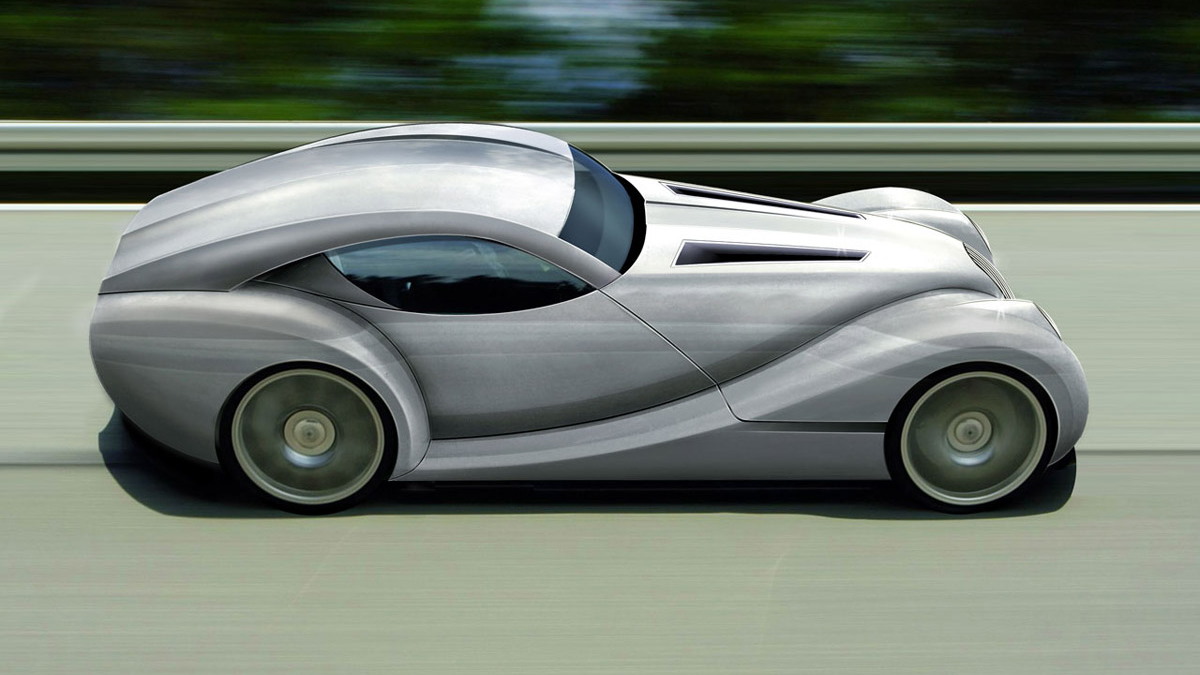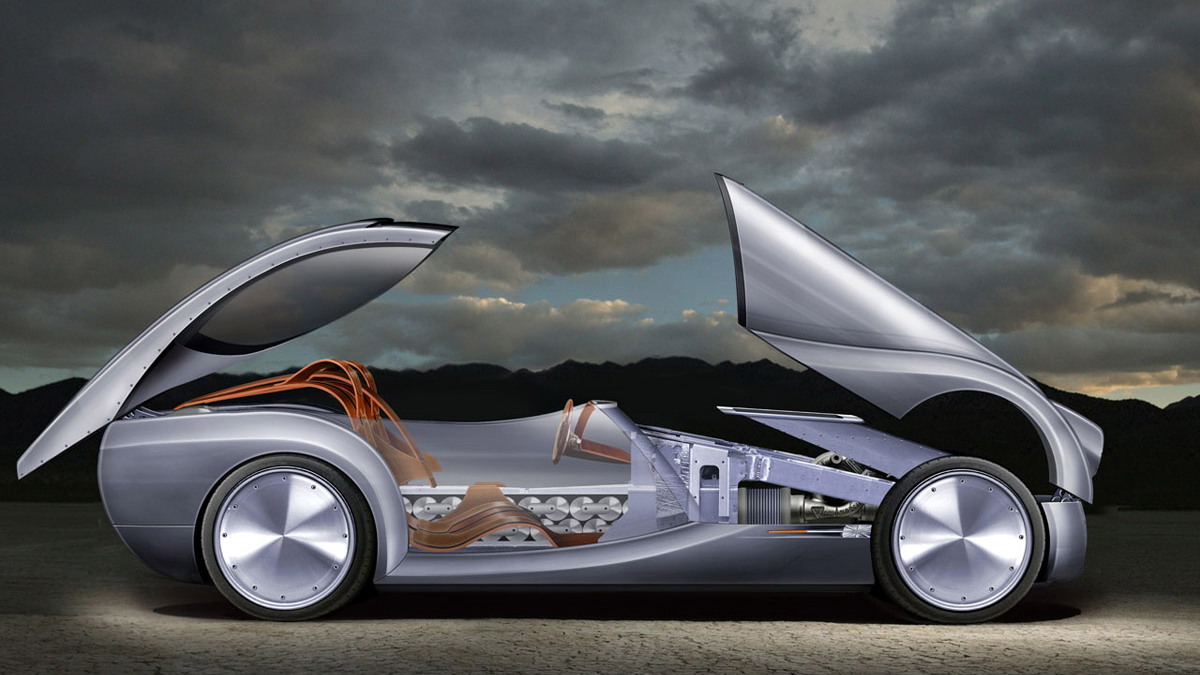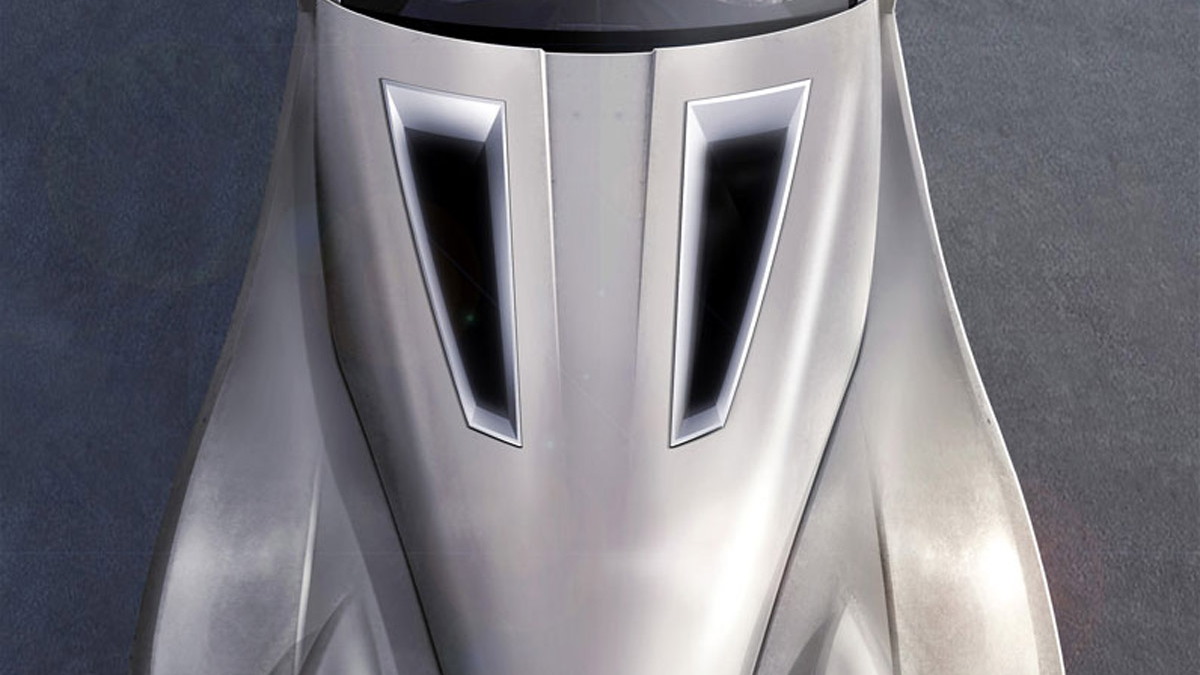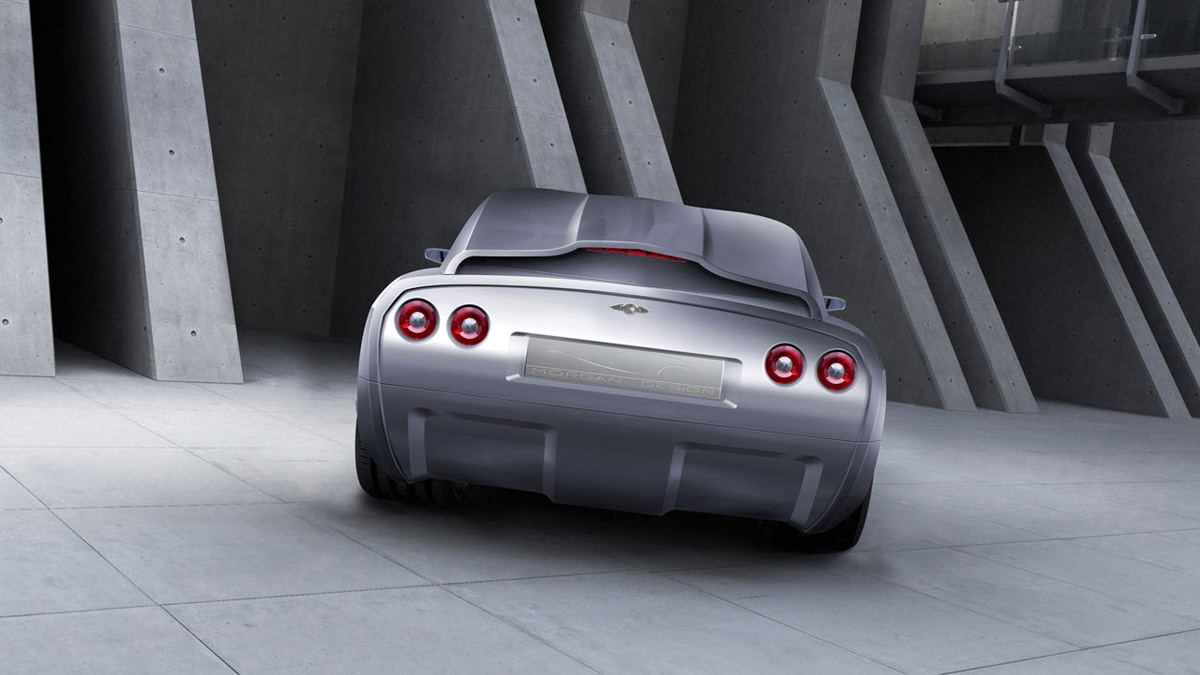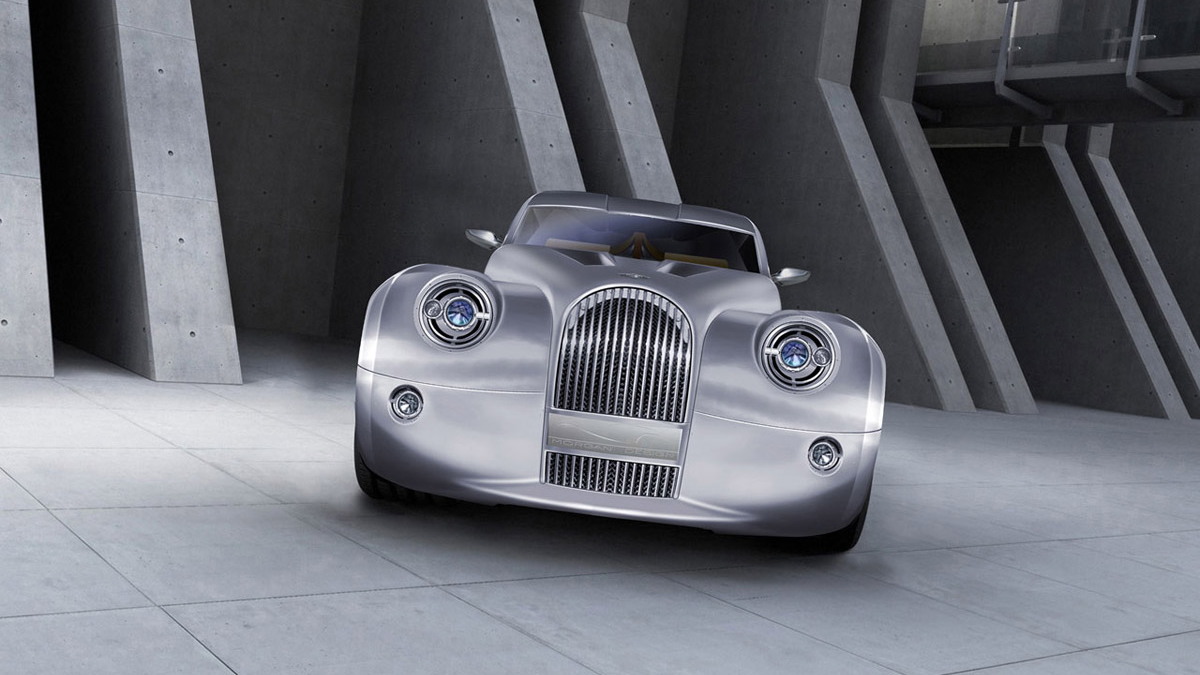Hydrogen gas powers a four-stack PEM fuel cell made by QinetiQ that generates 22kW of electricity, emitting only water and heat, which means zero tailpipe emissions. Of course that neglects the emissions in producing the hydrogen, but that's beside the point. The QinetiQ fuel cell operates at 45% efficiency, which represents a substantial advance over the efficiency of combustion engine technology where much more of the energy is wasted as heat.
The electric power is delivered to the wheels via four independent motors that are also capable of regenerative braking. Unlike current systems which recapture only about 10% of the kinetic energy through regenerative braking, Morgan claims the LIFECar's four motors enable it to recover nearly 50% of the energy. When not being used to power the motor or auxiliary systems, the electricity is stored in a bank of ultracapacitors developed in conjunction with Cranfield University.
All of this high-technology is meaningless without some hard numbers to back things up, however. Efficiency should equate to 150mpg (1.8L/100km) on a dollar-for-dollar basis. Top speed winds out at an estimated 80-85mph and 0-100km/h times should be in the sub-seven second range. Driving distance will be 250 miles on a tank of hydrogen, although finding a place to fill up again may eat into that range significantly.
_______________________________________
